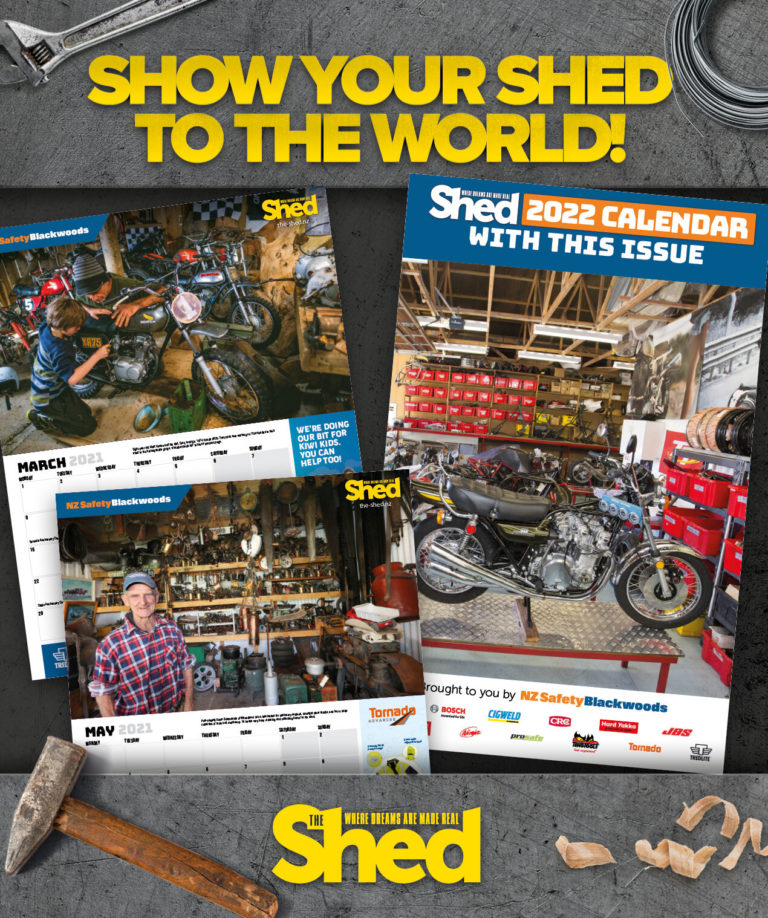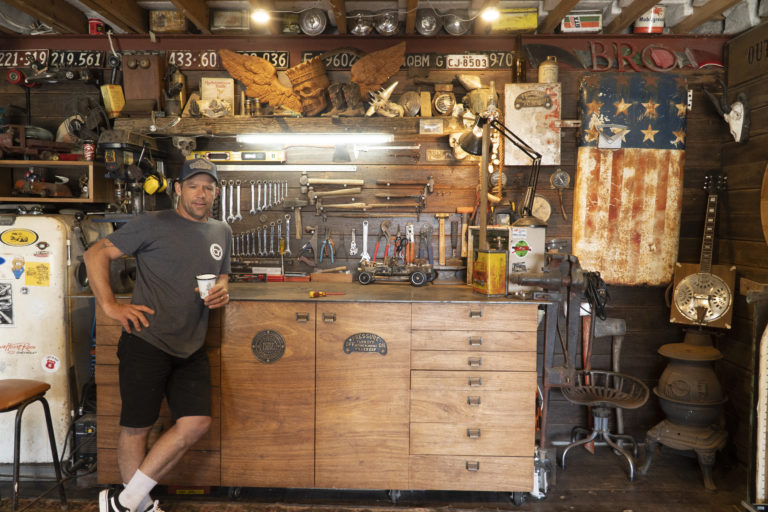A man and his shed share their love of wood
By Terry Snow
Photographs: Terry Snow
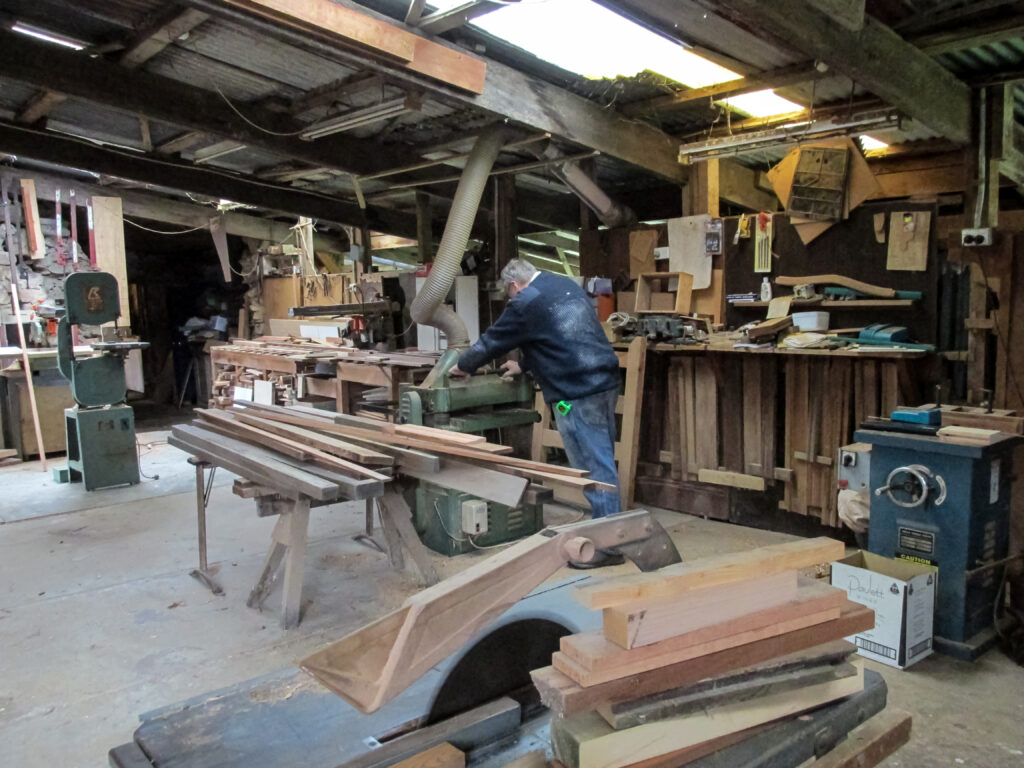
Brian Woodlands is semi-retired now but in his shed in south Australia he can proudly show off the samples from his joinery trade, the machines that supported his livelihood, the dozens of wood samples he collects, his antique hand tools and the rustic shed where “I have done some big stuff in this small workshop over the years.”
While the wind can come visiting through the spaces in the walls and open door, there is a cosy fire in an inner-room of the old-style country building and yarns aplenty to warm up the shed with an animated atmosphere.
“I was born here in the Adelaide Hills. My grandparents lived here in this district pre-war [World War Two] and my mother and father lived in the wattle-and-daub cottage over the road,” Brian says.
“In 1968, I took up an apprenticeship as a carpenter and joiner when I was 14 years old. I was not that rapt in school. As an apprentice you had to sacrifice wages to train but by time you were 18 or 19 it was good money. Today, apprentices start too late because they turn to the money first and it’s better early to be working at McDonald’s.”
Brian worked for more than 17 years at Otto & Co, a family-controlled business now run by the third generation and described as an Adelaide institution supplying local timber and building industries for more than 80 years.
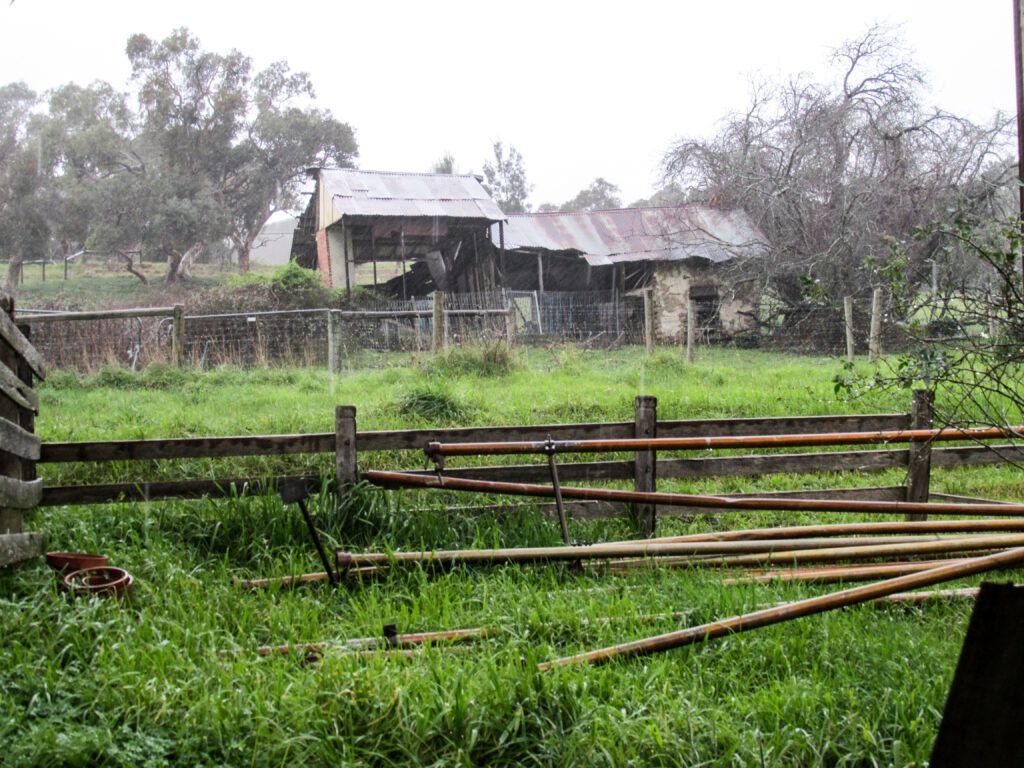
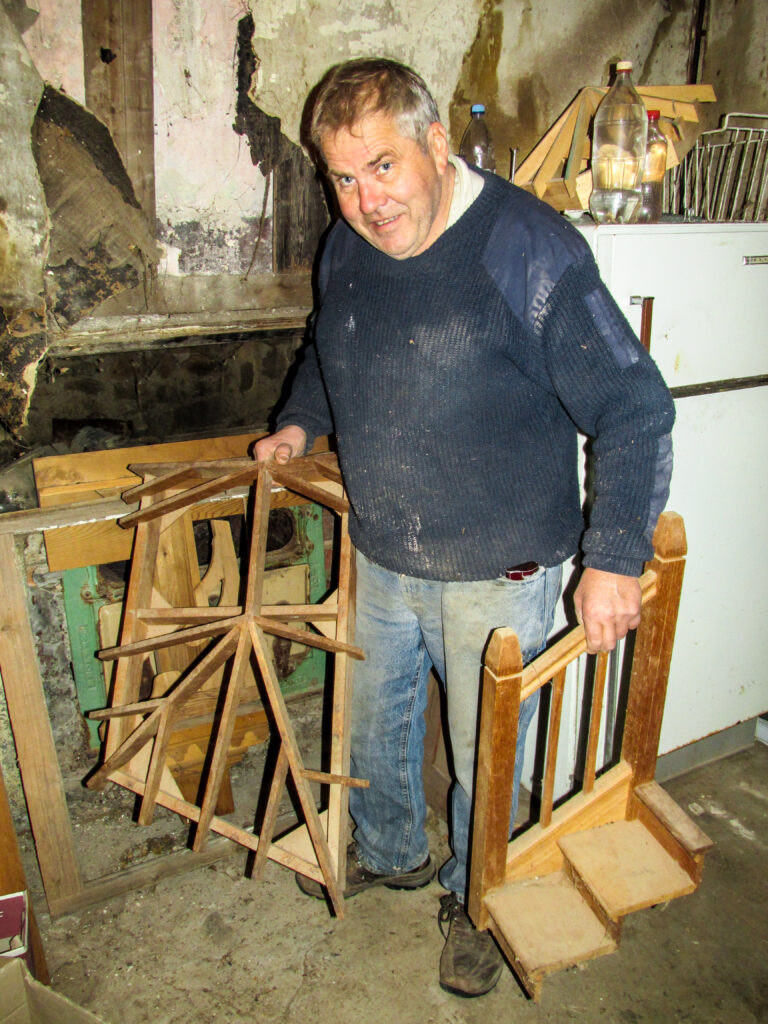
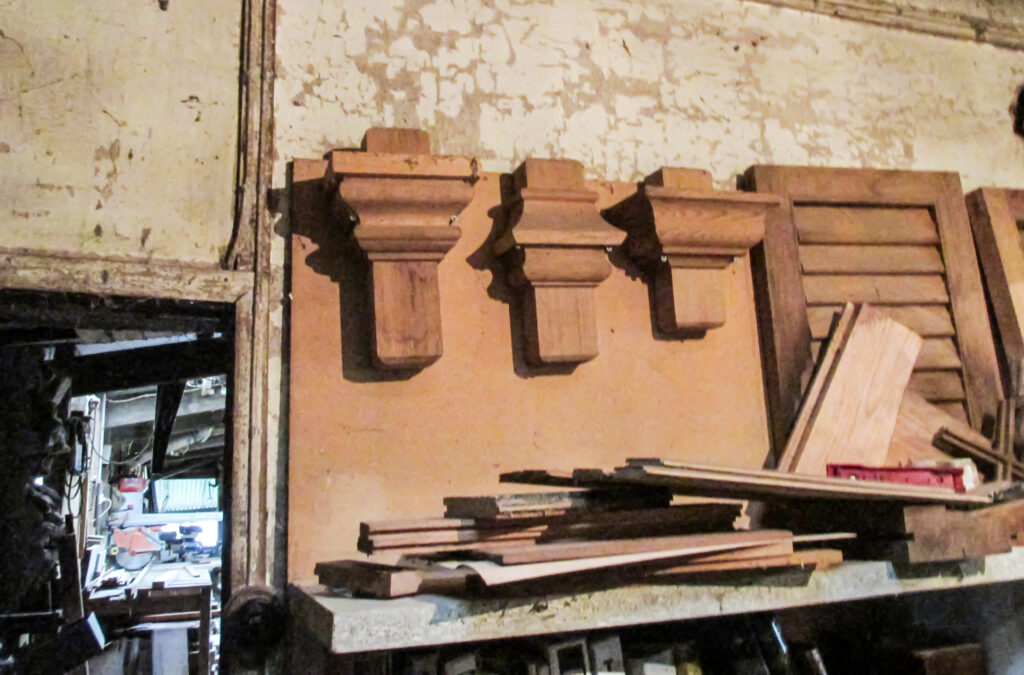
Timber
While gaining knowledge as a carpenter and joiner, Brian says he got to know about timber through Otto’s and got people interested as well.
“I turned gimbals out of as many timbers as possible. When customers came to get different timbers, I talked to them about wood (Otto & Co advertise more than 50 different species and veneers).
“I first joined the International Wood Collectors Society more than ten years ago and now I have samples of more than 100 timbers. I am a specialist in fancy timber and only three or four pieces are the same in my collection. You can buy and swap single pieces.
“I mainly collected the timber through the trade where I worked. There were some international timbers but mostly timbers from around Australia—there is a big range.
“Is my aim to collect as many timbers as possible? A difficult question. The collecting is just part of what I do. I also collect hand tools, metal hand planes and I am very interested in the history of joinery and have samples of traditional joinery models.”
To demonstrate, he quickly prises apart a halving joint—the big joint between the mullion and transom in a door frame in colonial architecture—points out examples of a solid wooden louvre and a plantation louvre that can open, shows the first few steps of a model staircase, a miniature roof truss, wooden capitals shaped by a spindle moulder and a bullnose riser for a staircase.
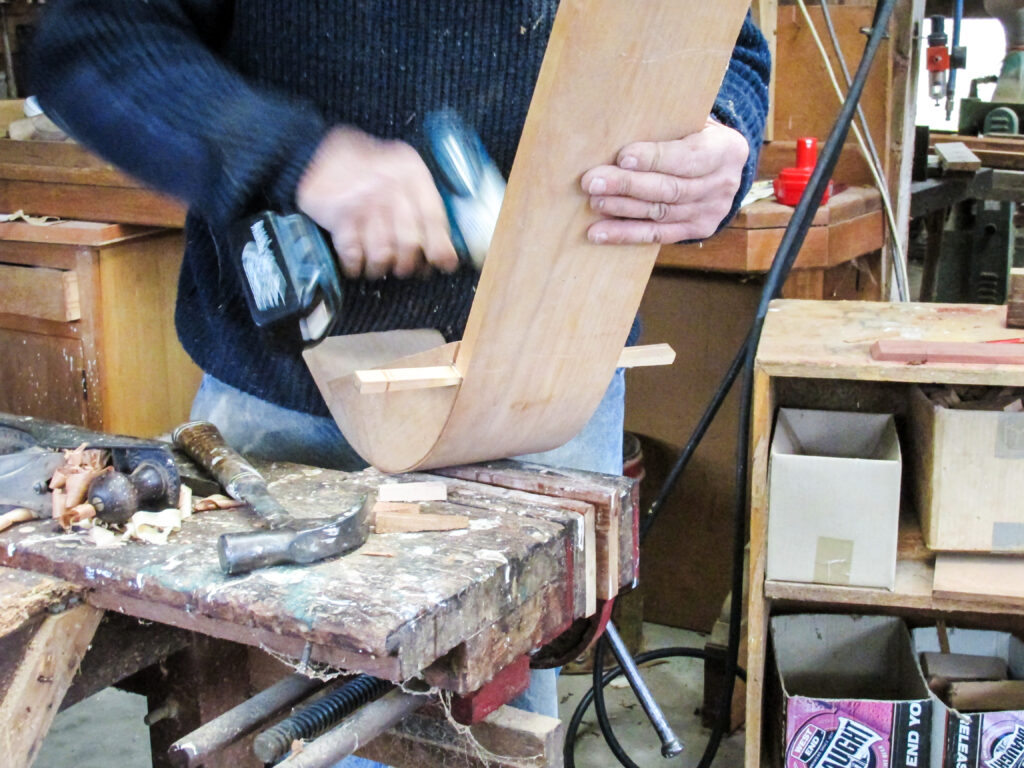
Teaching
The joinery models fit neatly into another aspect of Brian’s interest in joinery—teaching.
“In 2000 I cut the end off my finger in a spindle moulder,” he explains. “It got me thinking about what else could I do if I injured myself really badly. So I started at the TAFE (Australia’s Technical and Further Education institutes) as a part-time teacher in carpentry and joinery, the only lecturer in my trade at the time. I did that for ten years and two years ago I became semi-retired. I still do a bit of heritage work as a consultant. Someone has to go into bat for heritage buildings. They have to be done properly.
“Consulting in joinery can be applied in a couple of ways. I have made contact with a couple of heritage architects. I have a broad knowledge of timber/joinery/carpentry.
“I have to accept that joinery in the way I did it when I started is a dinosaur trade. Timber windows and doors are produced these days with a lot of shortcuts. Some are mass-produced but you still need an understanding of the traditional methods.
“When we were at the TAFE, there was some discussion about joinery and double hung box windows with bits and cords. The majority said yes, this was okay for the joinery qualification. Quite a few joiners do house-lots of box-frame windows to replace aluminium windows.”
You need a good sound knowledge of geometry to make good carpentry and joinery, he says, but it was at trade school and then at tech, not at school, that he picked up the school-level trigonometry needed and where he learnt how to do trade drawings and plan drawings.
While tech schools had closed recently, they were combined in super TAFES where all the trades were brought together after being in separate institutions, “quite a sensible idea.”
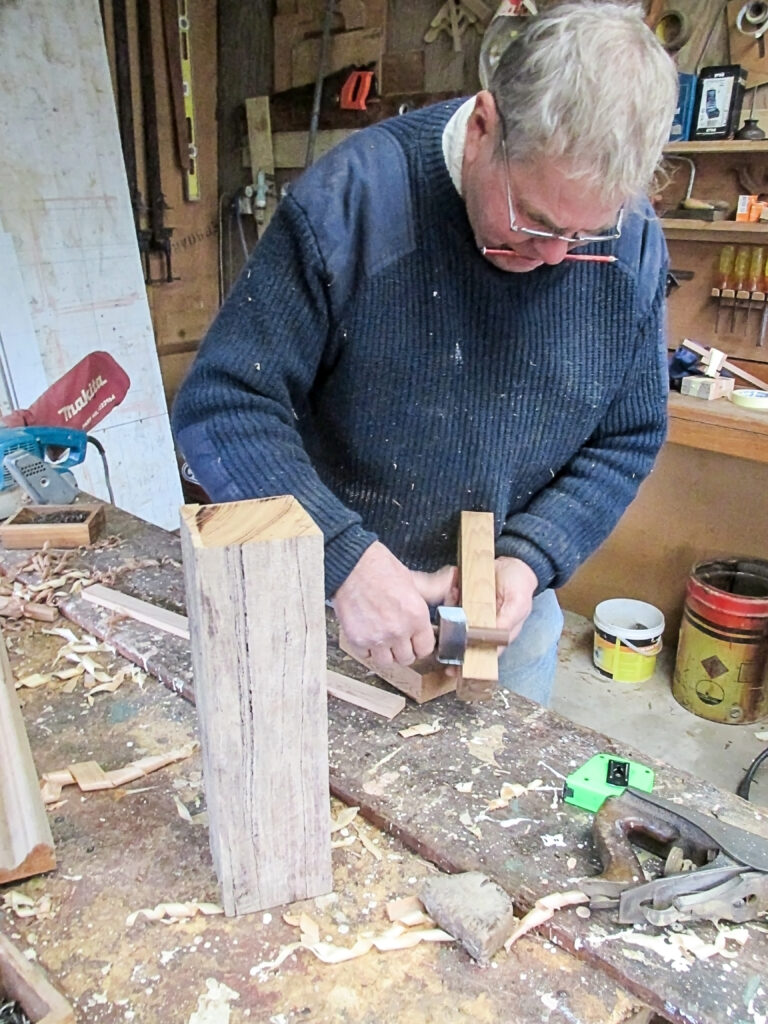
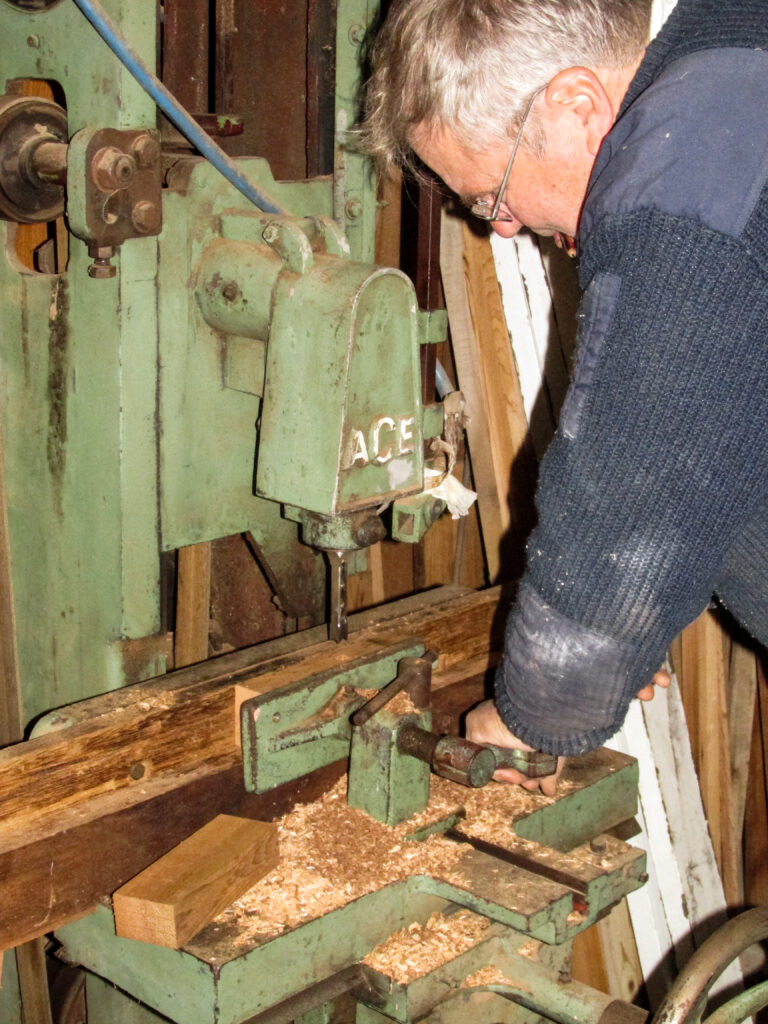
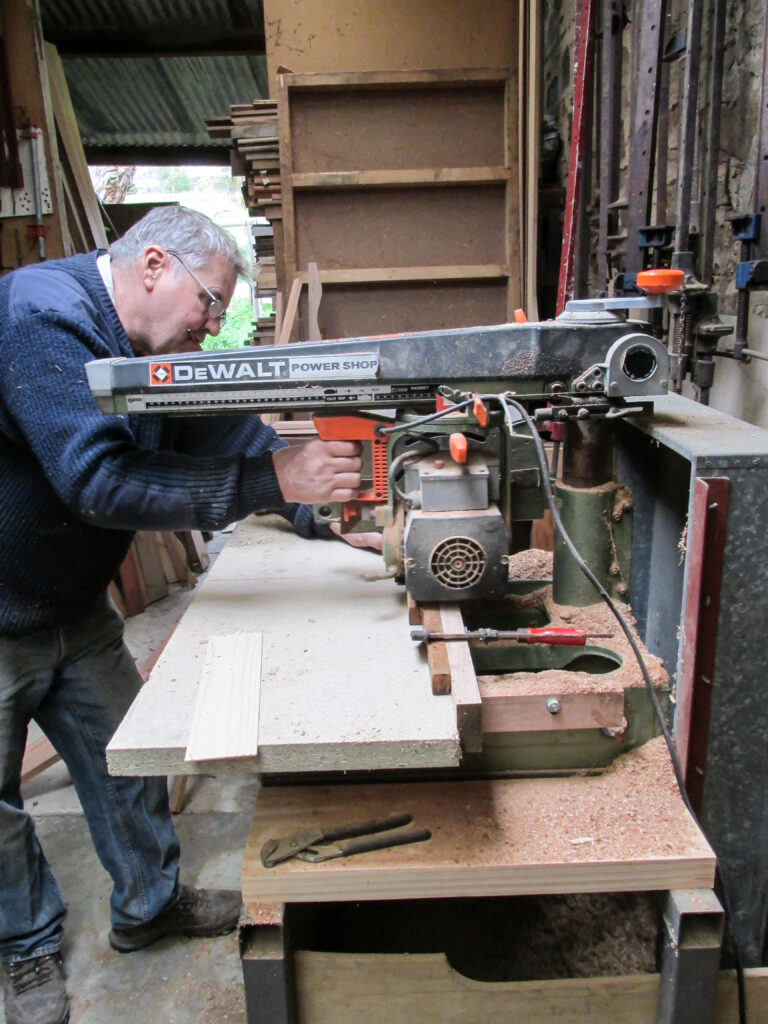
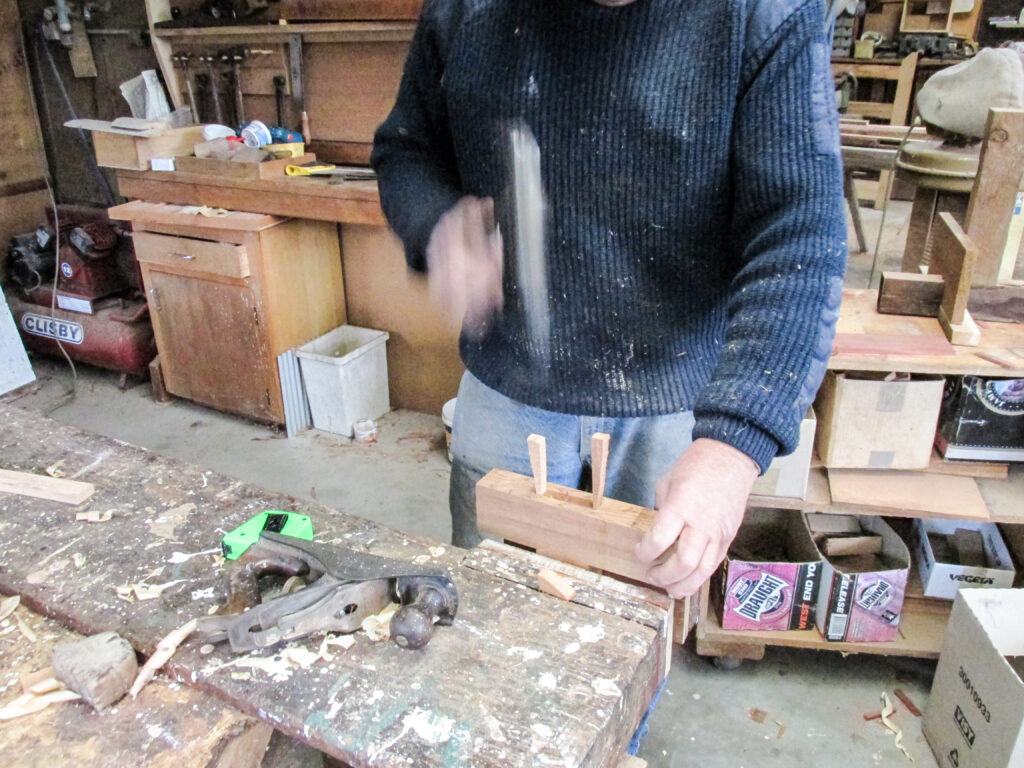
Mortise and tenon
Ever the teacher and joinery enthusiast, Brian quickly sets out to demonstrate making a mortise and tenon in the way he has practised in his workshop. After measuring and marking a piece of western red cedar with a mortise gauge, he makes quick work of the mortise with an old mortising machine, creates the tenon on a radial-arm saw with a dado head (“because I don’t have a proper tenon attachment”) and fits and finishes off the neat joint with wedges sawn-off, old-style.
“Wedges in heritage mortise and tenon joints are not obsolete in the market from what I have seen,” he says. “A lot of joinery for heritage buildings and joinery is still traditional work.”
And those old tradesmen obviously knew a thing or two.
“I know from experience and I realised early on that people who devised these joints worked out how timber moves and how to live with movement of the tenons. They knew about floating panels and slabs for door shrinkage and joint movements.
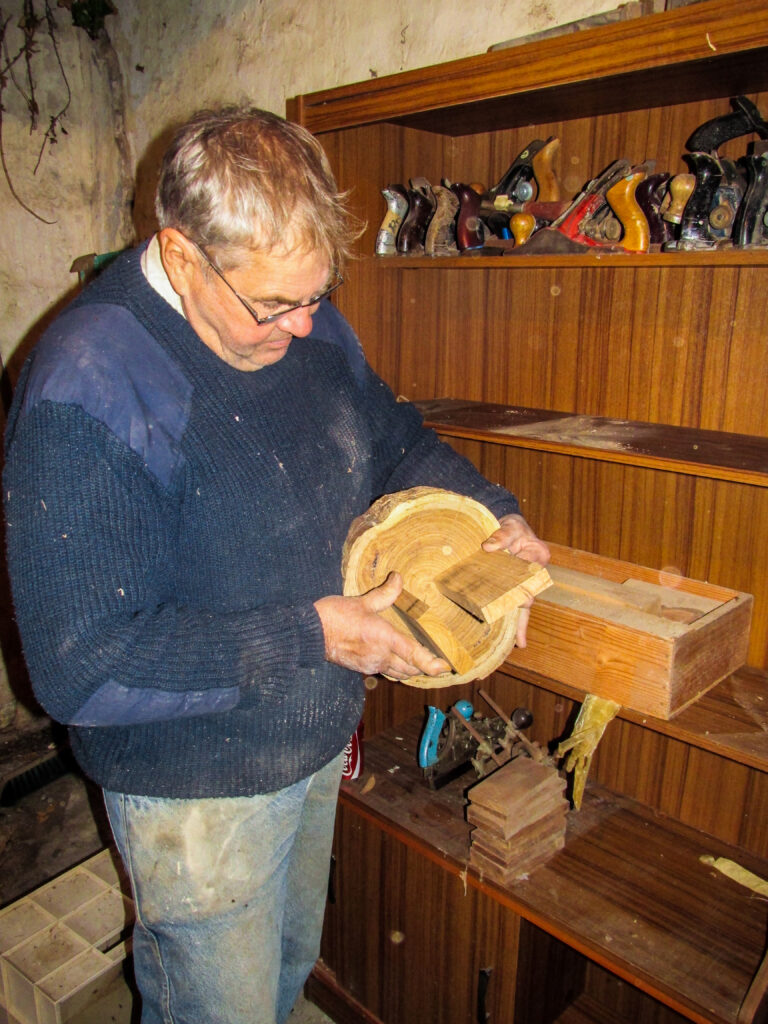
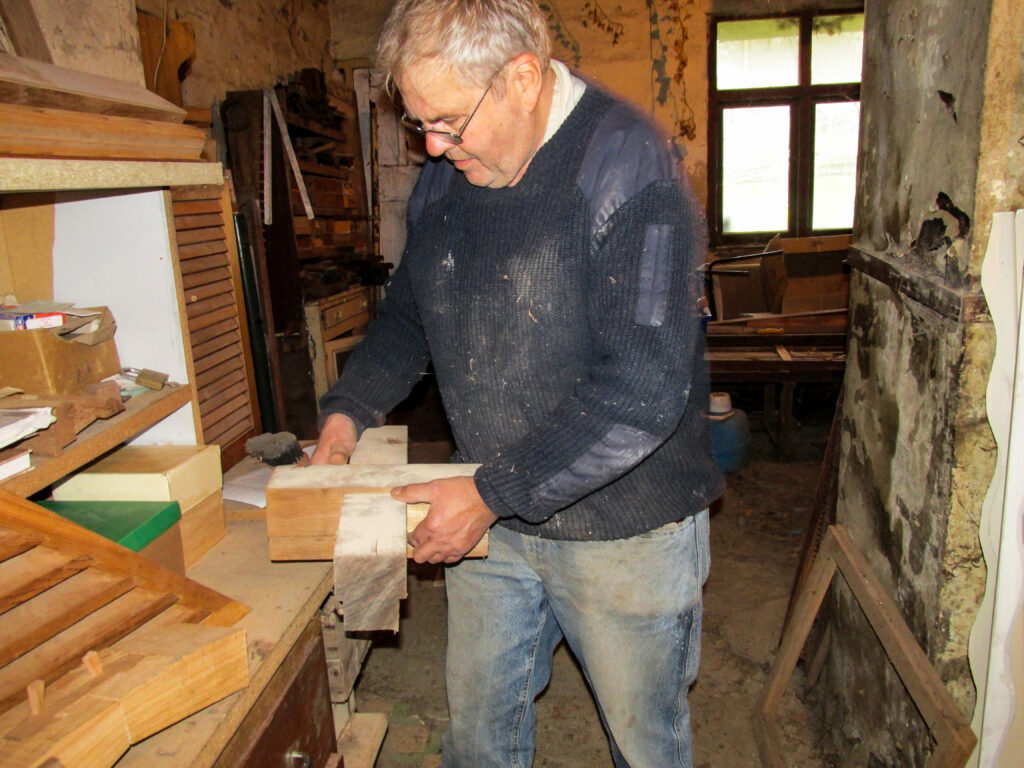
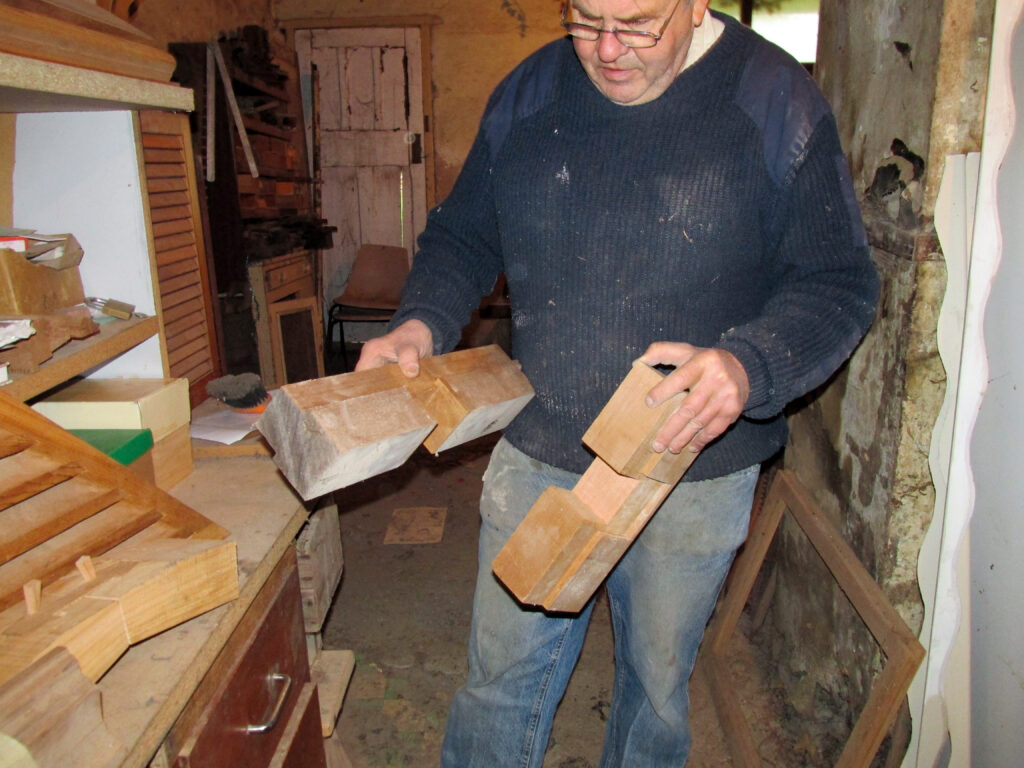
Workshop
A quick tour through the workshop follows. Says Brian, “It’s a small workshop but I have the machinery to take rough-sawn timber, rip it down and thickness it with a surface planer (buzzer). I updated a lot of machinery from the mid-70s.
Beside the practical equipment like his 14-inch bandsaw are the hand tools he loves and has collected: a No 8 Stanley plane carefully stored in a case, several wooden hand planes, crosscut saws from the old timber-milling days.
“I love old tools like my father used, “ he says, “but if the old feller could have seen my power router he would have thrown away his hand tools.”
Heritage projects he has worked on include a church in Mount Barker that needed capital moulds and finials, the second biggest double-hung window in Adelaide, and restoration work on the celebrated example of colonial architecture, Ayers House. The National Trust restored the 19th-century Adelaide grand mansion with its 40 rooms, ornate decorations and matching bow windows, home of the seven-times Premier of South Australia, Sir Henry Ayers.
But the basis of all this work is the timber and Brian has good examples of how to instruct the aspiring joiners and carpenters. He has a round of a log which he can use to demonstrate the differences between quarter-sawn timber and bench sawn (crown cut or flat sawing are other terms). His sample pieces of wood (in the standard international size for collectors of 152 mm x 76 mm) which he can lay out very quickly include such timbers as native cherry, New Guinea, rosewood, Oregon (Douglas fir), blackwood, Huon pine, Alaskan cedar, pepper tree, cedar of Lebanon, meranti, jarrah, pepper tree, merbau (kwila), and of course, blue gum. Some of his collection he has sourced locally, like Australian blackwood from a nearby sporting oval. And he has a useful exercise for identifying the density of these various timbers and then shows how easy it is to do.
“Timber floats in different ways according to its density of kilograms per cubic metre,” he explains, putting chunks of wood into water in a container. “Pinus floats half above and half below the water so that indicates a density of about 400 to 500 kg per cubic metre. Jarrah goes just under the surface so that is about 900 kg per cubic metre. Inland acacia is about 1000 kg per cubic metre. Lignum vitae, the dense heavy wood that you will find in lawn bowls, is about 1300 kg per cubic metre.
“The moisture in the fibre is huge and in joinery you have to sense it and understand it in use. You have to be able to work with it.”
Apart from his membership of the International Wood Collectors Society and his woodwork career, he had a busy life as a volunteer member of the Country Fire Service (CFS) of which he is now a life member, a member of South Australian Historical Tools Association and a South Australian member of the National Trust.
“With three kids it was always necessary to be earning money in the joinery and carpentry business, working with wood, but I suppose my interest in wood is now a bit romantic.”
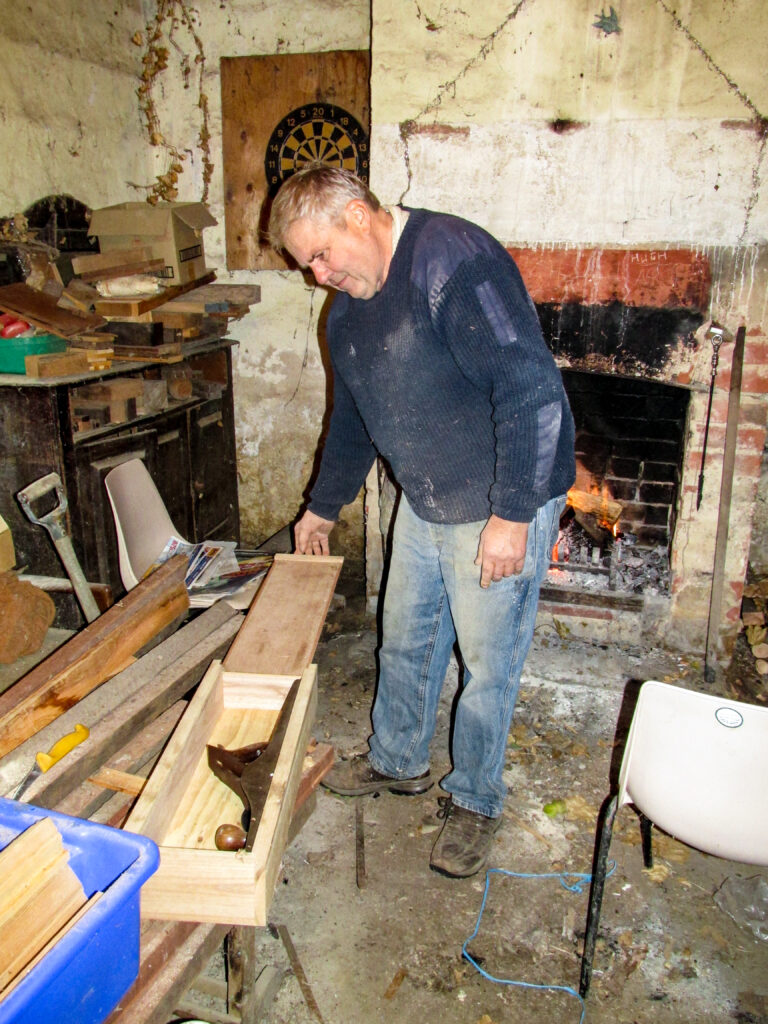
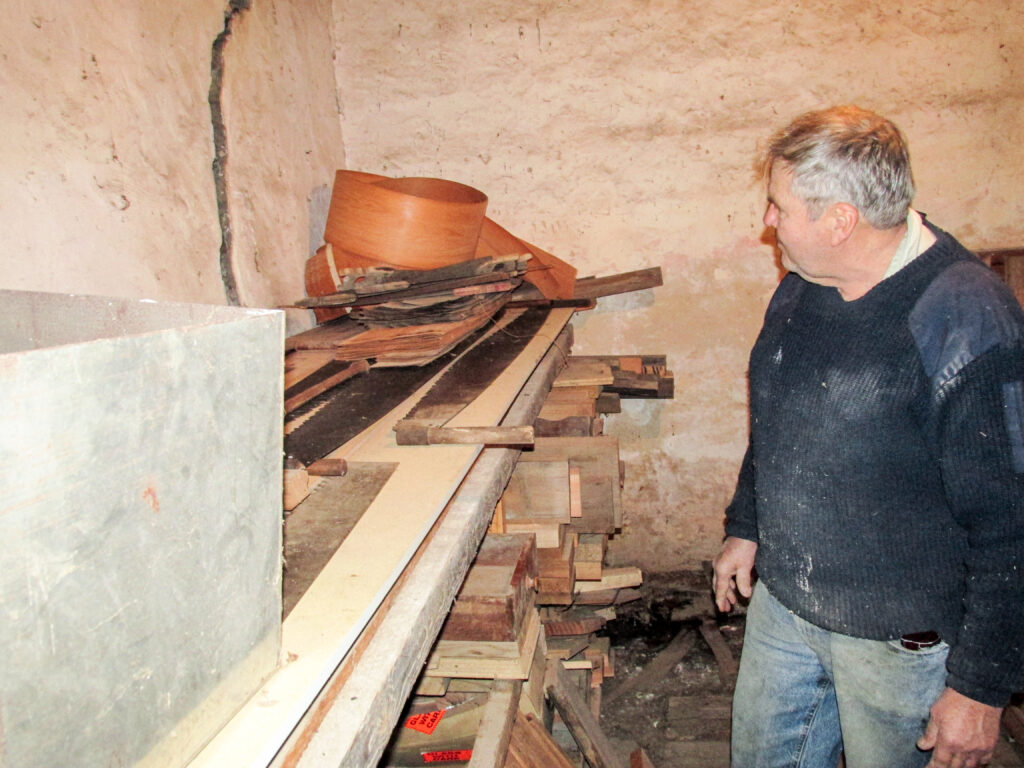
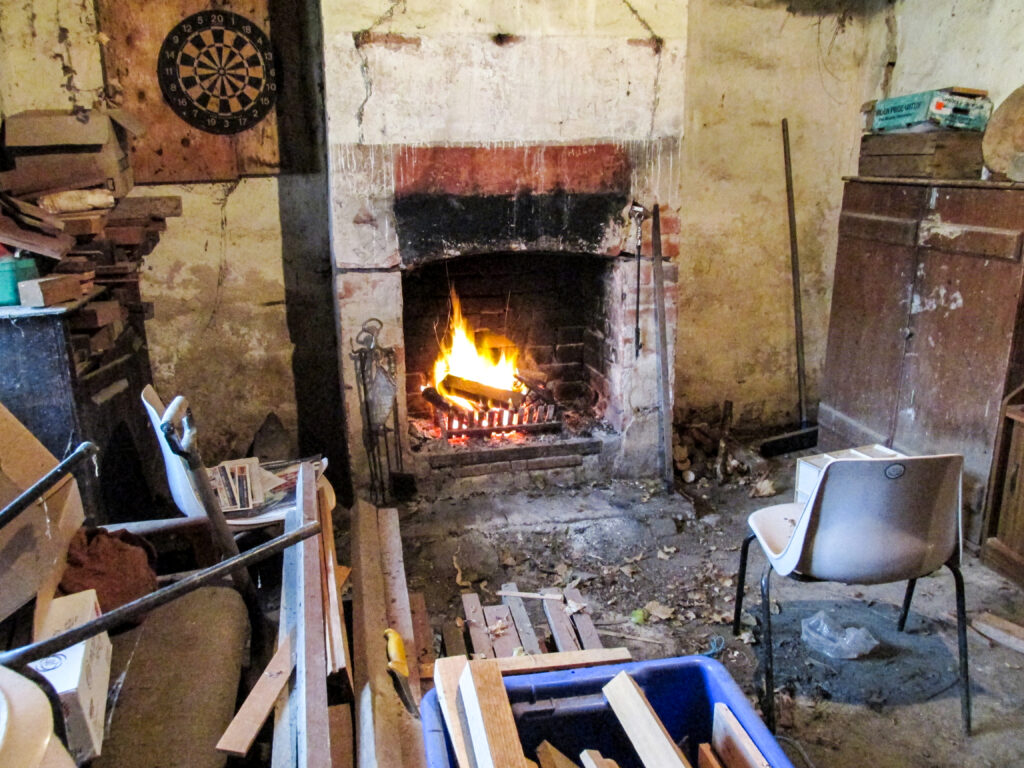
International collectors
To collect wood samples is to enter a world where there are more than 100,000 species of wood and the best approach is to have serious accuracy about the names, says the International Wood Collectors Society (http://www.woodcollectors.org). “Most people can cope with wood names like oak, pine, walnut and balsa and this will do for those who are content to do woodwork with a small percentage of the world’s woods, says the organisation. However, to collect properly you have to use scientific names of species such as Fagus grandifolia (American beech), Haematoxylum campechianum (logwood) and Sideroxylon foetidissimum (false mastic). Wood collecting is not for the academically faint-hearted. But it is rewarding for those that persevere.”
Collecting samples of woods from around the world has to be as rewarding as just about any other collecting type of endeavor, says the society, comparing coins, stamp, dool or butterfly collecting. “Collectors soon learn that wood exists in practically every colour, weight, hardness, texture and grain pattern imaginable. Polished wood samples can play with light in an iridescent manner much like jewels, reflecting patterns back in fancy grained samples that make them look like their surfaces resemble holograms.”
Samples through the society or from other collectors generally cost around $US2, they say, with very rare ones or samples with fancy figure usually being available for under $6. And there are conventions. “Make sure that you keep to the conditions and payment of the member supplying you. Where possible, samples are in a ‘standard sample’ size of 6” x 3” x ½” (152 mm x 76 mm x 12.5 mm). This makes storing, shipping and handling samples far easier than random sizes.”

